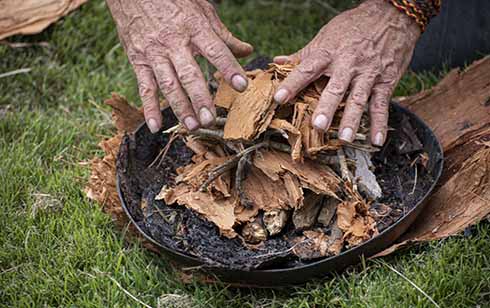 Days that honour particular groups of people encourage us to take interest in the individual lives of persons who belong to those groups.
Days that honour particular groups of people encourage us to take interest in the individual lives of persons who belong to those groups.
If we don’t belong to distinctive groups in society, we are liable to forget them, see them as a problem, a cause, or a brand name in which all members are the same. On the other hand, if we attend solely to groups and their needs, we may neglect the crucial relationships that bind them to other groups in society, and the opportunities and threats that these relationships may provide.
The Day for Indigenous Peoples (9 August) addresses this double challenge. It invites us to attend to the distinctive lives and hopes of Indigenous Australians and also to recognise of what they share with other Indigenous peoples throughout the world.
BROADER VIEW
When we take this broader view we see the things that link different peoples who have been driven off their original lands and have become marginal in their own nation. We see the similar patterns of neglect by the peoples who banished them, of discrimination against them, and the lack of respect paid them in the administration of law and conferring of benefits.
Beside the personal and distinctive stories of people in each group, we may also recognise, a common story that links the lives and plight of many Indigenous peoples. Statistics, for example may show that their health, income, access to work and education, security of housing and land tenure, rate of contact with police and the penal system are all worse than those of equivalent people in the nations of which they are part. We may find common patterns of prejudice and discrimination displayed by members of the groups that displaced them.
WORK TO EFFECT CHANGE
Once we attend to this situation, we then recognise that we must work to change it. Indigenous communities can work effectively at this by making common cause with other groups who are discriminated against. We have recently seen how powerful this solidarity can be through the Black Lives Matter movement. This began as a response by Black people in the US to the violence directed against them. It gathered much support throughout the US. It was also drawn on, however, by American Indians who suffered from similar discriminatory violence. The call was then adopted by Indigenous Australians to draw attention to the disproportionate Australian rate of imprisonment and death in prison of Indigenous people. The movement contributed to an increased awareness among Australians of the injustices suffered by Indigenous people through their despoliation by white settlers.
ALTER OUR VISION
As is the case with all minority peoples in society, the international day celebrating them invites us to alter the way in which we ordinarily see them. We are trained to regard them as the left-overs of history, scattered descendants of people who ceased to exist as a people when their land was conquered by others. They are seen as living archaeological relics, a footnote to the real story of the nation. The Day for Indigenous peoples reminds us that they were not replaced. They continue to be part of a living culture and continue to make a claim for recognition and participation in the governing of the land from which they were driven. They are entitled to this.
Let us try to walk the path of recognition and respect for Indigenous Australians, and to recognise of the claims that Indigenous Australians make on our society. It is a long walk on which we and our fellow Australians are at the beginning.
Image: Preparing for a smoking ceremony - Getty Images